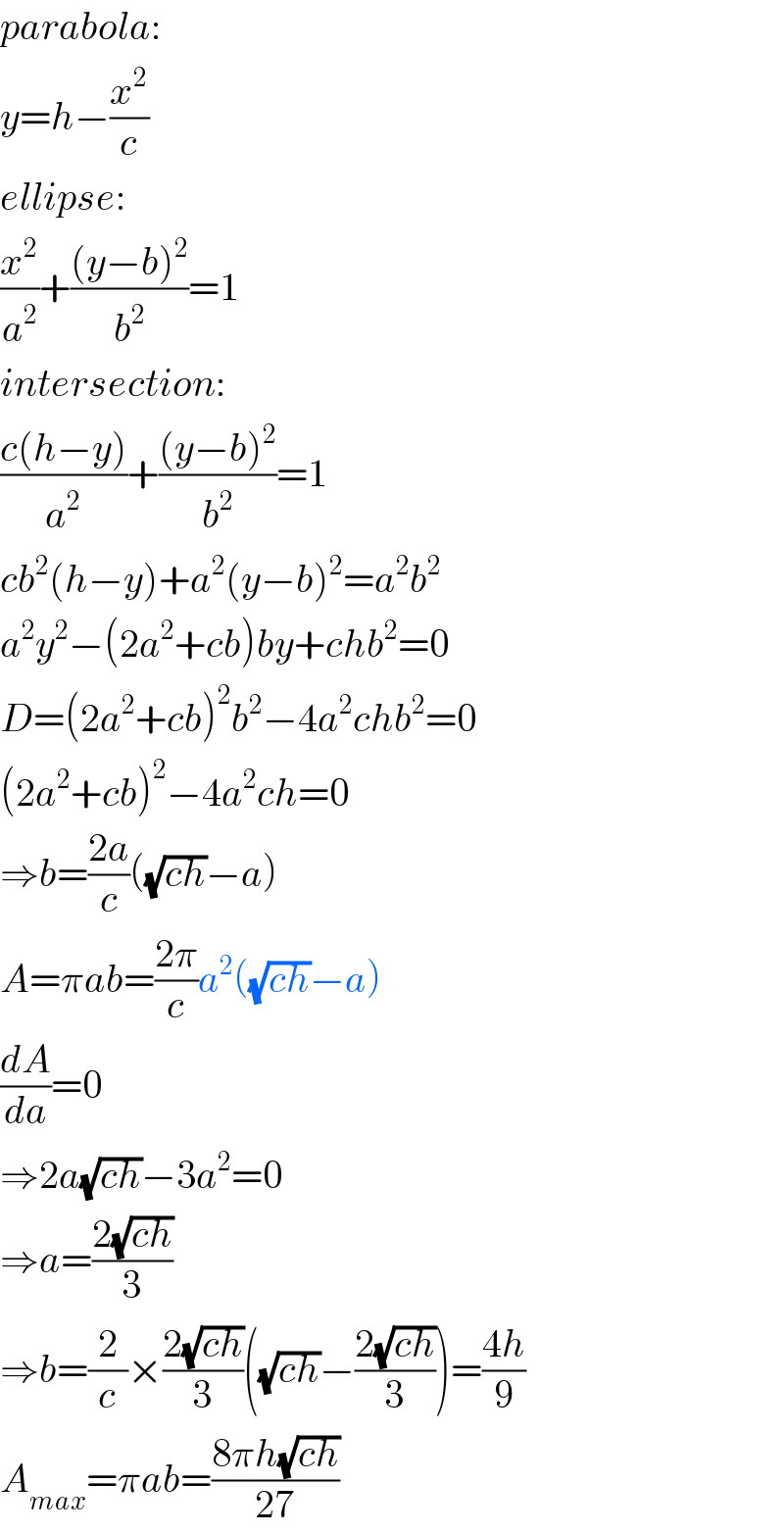
Question and Answers Forum
Question Number 54242 by ajfour last updated on 01/Feb/19

Answered by mr W last updated on 01/Feb/19

Commented by ajfour last updated on 01/Feb/19

Answered by ajfour last updated on 01/Feb/19

Commented by mr W last updated on 01/Feb/19

